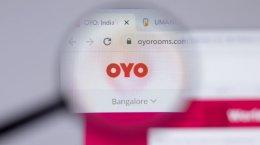The Indian private equity market is currently going through one of its biggest crises ever since it started in the 1990s. In the late 90s, a lot of Indian VC firms had to write off money owing to the dotcom bust. Now many PE firms are not able to raise fresh funds nor some of the entrepreneurial managers were able to raise capital because of a lack of confidence by limited partners in the Indian PE asset class.
For one, Indian PE funds have not been able to show as many exits as its other emerging market counterparts like China or Brazil. Many of the investments made in 2007-08 are under water.
So there is:
1. An ever-increasing overhang of assets waiting to be sold
2. The continued pressures to return capital to LPs
3. Diminishing chances to profitably exit from big holdings from the boom-year vintages.
The inability of GPs to exit profitably was further compounded by the depreciation of Indian rupee against dollar. To make matters worse, Indian GPs had spun out a little too often, which made LPs see it as a “betrayal of trust†or a “failure of alignment†than an “evolution of the industry†in most cases.
Consequently, limited partners are showing increasing caution when allocating funds here. The total fund value allocated to India was only $3.5 billion in 2012, down from $6.8 billion in 2011, according to London-based LP tracker Preqin.
So, is it only negative for Indian private equity?
No. A VCCircle survey of over a dozen foreign institutional limited partners with significant exposure to the region suggests that India remains an important market to them and the good news is that nobody is saying “No to Indiaâ€. That said, LPs realize that India is not a beta play and they need to cherrypick fund –managers based on their track record.
A majority also believed that the public reputation of Indian PE is bad with almost 100% of respondents agreeing that the contraction in the Indian PE industry is almost probable and necessary. As balance of power shifts to LPs, there were also some interesting responses seen on what should be the ideal management fee structure for Indian PE funds. LPs also shared their views on aspects like: do they prefer allocating capital into Indian PE spin-outs; their return experience from Indian PE; do they mean to increase or decrease their allocation to the region or the key barriers for Asian LPs as they start or consider expanding their commitment to Indian PE among others.
So, what do LPs really want?
- GPs who could repeat or institutionalise success
- GPs who could build consistency, legacy and an institutional framework for repeatability
- GPs who could incentivise the team well for a long-term alignment
- GPs who have “desire to be successful†than only being “transaction orientedâ€
- GPs who have good infrastructure for effective LP communication
The scenario would look much better with Indian PE fixing these missing blocks as there is a scent of optimism to be seen both on the fundraising side and on the opportunity side—valuations are getting reasonable (at least PE investors are taking cognizance of the same); multinationals are looking to divest their Indian businesses, first-generation entrepreneurs are willing to let go of their businesses and so on. Plus the fact that many established GPs have proven themselves to be winners that deserve to attract additional capital and that private equity is the best-performing asset class for most LPs over any long-term horizon will bring about a new wave of Indian PE going forward.
VCCircle brings to you a survey of over a dozen LPs who have an exposure to the region to better assess their expectations going forward. Download the report here (You need to be a premium account subscriber to get the report; if you would like to sign up for a premium account, click here).





